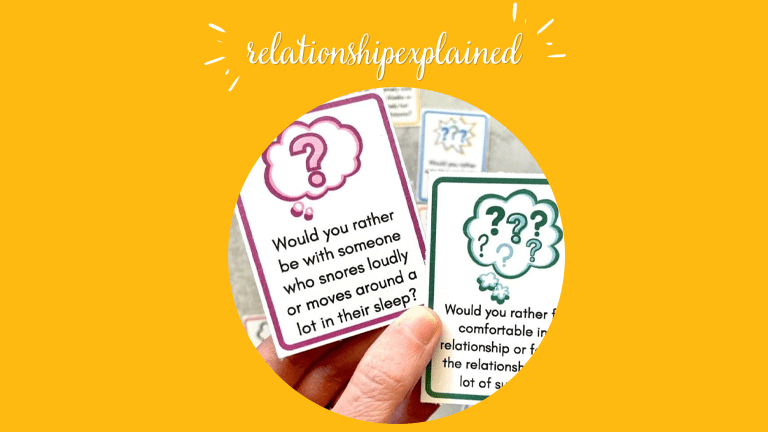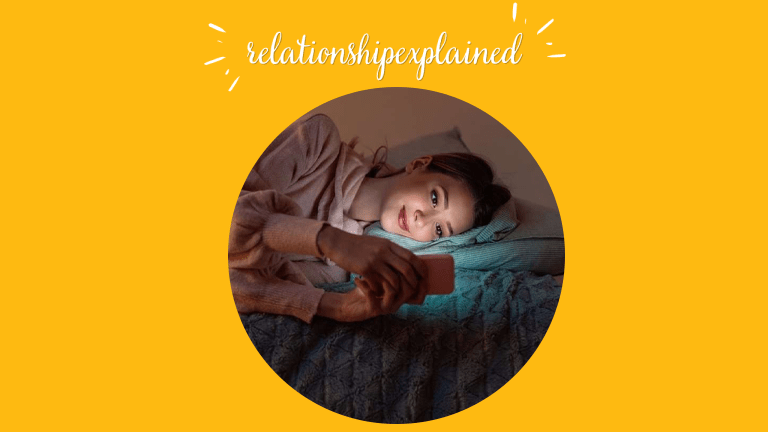Why Does My Girlfriend Not Want To Cuddle Anymore?
Understanding and respecting your girlfriend's boundaries, prioritizing emotional connection, and creating a comfortable environment can help explain why she doesn’t feel the same way as you. Patience, open communication, and empathy are key to fostering a more affectionate and fulfilling relationship.
Intimacy and physical affection are vital aspects of romantic relationships, often symbolizing a deeper connection between partners.
So, if you've noticed a change in your girlfriend's attitude towards physical contact, it's natural to wonder why. While every relationship is unique, there are common factors that may contribute to this change, such as personal boundaries, stress, or shifting comfort levels.
By exploring these potential causes, you can gain a better understanding of your girlfriend's perspective and work towards fostering a more fulfilling and supportive bond. Let’s explore the possible reasons behind your girlfriend's reluctance to cuddle and provide insights to help you navigate this situation.
10 Reasons Why Your Girlfriend Refuses To Cuddle Anymore
There may be times when your partner no longer wants to cuddle, leaving you perplexed and longing for an explanation.
While every individual and relationship is unique, several common reasons may contribute to this change in behavior. Understanding these reasons can help you navigate the situation with empathy and open communication. Let's explore some possible explanations.
1. Personal Boundaries
Respecting personal boundaries is an integral aspect of fostering a healthy and harmonious relationship.
It is possible that your girlfriend's hesitance to engage in cuddling may be rooted in a shift in her comfort levels or the establishment of new boundaries concerning physical intimacy. Such changes can be influenced by a variety of factors, including personal growth or shifts in her emotional and mental well-being.
2. Emotional Disconnection
Cuddling often reflects emotional closeness and vulnerability. If your partner is emotionally distant or going through a challenging phase in her life, she may not want to cuddle anymore.
Factors such as stress, work pressure, family issues, or unresolved conflicts can all contribute to a sense of emotional disconnect. And resolving these issues is a matter of giving her the space she needs and being as supportive as possible.
3. Physical Discomfort Or Sensitivity
Sometimes, physical discomfort or sensitivity can play a significant role in your girlfriend's aversion to cuddling.
She may be experiencing physical discomfort due to hormonal changes, illness, or pain. Certain medical conditions, such as fibromyalgia or chronic pain disorders, can also affect one's ability to engage in physical affection comfortably.
It's essential to be understanding and supportive, encouraging her to seek medical advice if necessary and finding other ways to express love and care.
4. Communication Breakdown
Effective communication is the foundation of any healthy relationship.
If your girlfriend doesn’t want to cuddle, it could be an indication of underlying communication issues. Your partner may find it a bit challenging to articulate her need to take a break, preferences, or concerns regarding physical intimacy.
Encourage open dialogue by creating a safe space for her to express herself without fear of judgment or criticism. Active listening and empathetic responses can help foster trust and strengthen your connection.
5. Relationship Dynamics
Relationship dynamics evolve over time, and changes in the frequency or desire for cuddling can be influenced by various factors.
For instance, if your relationship has transitioned from the honeymoon phase to a more settled stage, the initial intensity of physical affection may naturally wane. Additionally, external factors like a long day at work, family responsibilities, or lifestyle changes can impact the amount of time and energy available for intimate moments.
Basically, understanding and adapting to these shifts in your relationship dynamics can help you navigate this change together.
6. Unresolved Relationship Issues
Unresolved conflicts or unresolved emotional issues within the relationship can create a barrier to physical intimacy.
If there are underlying resentments, trust issues, or emotional wounds that have not been addressed, your partner may not want to cuddle. It's crucial to actively work on resolving conflicts, seeking couples therapy if needed, and fostering an environment of emotional safety and trust.
By addressing these issues, you can both be on the same page.
7. Fatigue And Lack of Energy
Being tired or experiencing a lack of energy can significantly diminish one's inclination for physical closeness, such as cuddling at night.
Your girlfriend’s demanding schedule, work obligations, or overall weariness might be influencing her to prioritize rest in the house and rejuvenation over intimate cuddling moments. It's essential to understand that individuals have varying energy levels and different ways of recharging themselves outside of cuddles and affectionate acts.
Remember that many women don’t like being cuddly after facing a day out in the world. You can always wait and decide to cuddle afterward when she feels ready to be proactive, both emotionally and physically.
8. Changing Priorities Or Interests
People evolve, and their priorities and interests may shift over time. Your girlfriend's diminishing interest in cuddling could be a reflection of changing preferences or a desire for different forms of connection. Explore new ways to show affection that align with her evolving interests, such as engaging in shared hobbies, having conversations, or planning activities together.
9. Insecurities And Body Image
Insecurities about body image can impact a person's comfort with physical affection.
Society's beauty standards and personal insecurities may make your partner hesitant to cuddle. Encourage her by emphasizing her unique qualities and expressing your love and attraction for her.
Reinforcing a positive body image and creating a safe and accepting environment can help alleviate her concerns.
10. Past Trauma Or Emotional Baggage
Past traumas or unresolved emotional baggage can significantly impact the willingness of a person to engage in physical intimacy, including cuddling.
Your partner may have experienced previous relationships or events that have left deep emotional scars or created a fear of vulnerability. These experiences can make it challenging for her to fully trust and feel safe in the context of physical affection. It's crucial to approach this situation with sensitivity and encourage her to seek professional support if needed.
Creating a nurturing environment that prioritizes emotional healing and understanding can help her gradually rebuild trust and feel more comfortable with physical closeness.
6 Tips On Getting Your Girlfriend To Cuddle With You
Physical affection, such as cuddling, plays a significant role in fostering intimacy and strengthening the bond between a person and their partner.
If you've noticed that your partner doesn’t enjoy cuddling and that her desire to rekindle that connection has lowered, there are several tips you can try. It's important to approach the situation with empathy, open communication, and respect for your girlfriend's boundaries.
Keep in mind that every relationship is unique, and not all approaches may work universally. However, the following tips can serve as a helpful starting point to encourage your girlfriend to engage in cuddling and create a warm environment filled with affection.
1. Start With Open And Honest Communication
Effective communication is the cornerstone of any successful relationship and is not indicative of one being selfish.
To address the issue of decreased cuddling, it is crucial to initiate an open and honest conversation with your girlfriend. Start by expressing your own feelings and the significance of physical affection in your relationship. Let her know that you want to cuddle because it is an important way for you to feel connected and loved.
While expressing your own desires, it is equally important to be attentive to her perspective. Encourage her to share her thoughts, concerns, and any barriers she may hope to overcome when it comes to cuddling. Create a safe and non-judgmental space where she can feel comfortable expressing her affection openly. This will allow you to gain a deeper understanding of what she is feeling and help you navigate the situation with empathy and compassion.
Be aware that effective communication is a two-way street. You must be prepared to listen and respond non-defensively to any concerns or feedback she may have as her partner.
This conversation should serve as an opportunity for both of you to express your needs and find common ground. There’s nothing wrong with working together to find a solution that respects both your boundaries and desires, after all.
2. Respect Her Boundaries
As her boyfriend, respecting your girlfriend's boundaries is not only essential but also fundamental to maintaining a healthy and fulfilling relationship.
If she has expressed discomfort or reluctance to kiss, have sex, or cuddle, it is crucial to honor her feelings and boundaries. Pushing her to engage in physical affection against her will can create feelings of resentment or further distance between you.
Instead, show your respect through acknowledgment and accept her limits. Let her know that you value her autonomy and that her comfort is a priority. Express your willingness to support her needs and find other ways to connect and show affection that aligns with her boundaries.
By demonstrating respect for a woman’s life and boundaries, you are fostering an environment of trust, understanding, and emotional safety. This approach allows your girlfriend to feel heard, validated, and supported in the relationship.
3. Create A Safe And Comfortable Environment
Creating a conducive environment is essential for promoting relaxation and emotional connection while being cuddly at night.
Setting the mood plays a significant role in cultivating a sense of comfort, affection, and intimacy. To create a cozy and inviting space, consider elements such as soft lighting, comfortable pillows, and blankets. Dimming the lights or using warm, soft-toned lighting can create a soothing atmosphere that encourages relaxation.
Eliminating distractions is also crucial in fostering uninterrupted quality time together. Put away phones, turn off the television, and create a technology-free zone during your cuddling session. This allows both partners to focus fully on each other and enhances the intimacy of the experience.
In addition to the physical environment, consider incorporating elements that evoke a sense of calmness and peace. Playing soft background music or using aromatherapy with scented candles or essential oils can further enhance relaxation and affection.
4. Focus On Emotional Connection
Cuddling goes beyond mere physical touch; it is a means of establishing and strengthening emotional closeness with your girlfriend.
Prioritizing the development of an emotional connection is crucial in encouraging her to engage in cuddling. One way to achieve this is by engaging in activities that foster deeper emotional intimacy instead of being inwardly focused.
Take the time to talk with your girlfriend. Create a safe and non-judgmental space where both of you can openly share your thoughts, affection, and life experiences. By actively listening and showing genuine interest, you can nurture a sense of emotional understanding and vulnerability between you. And you let her know that there is nothing wrong with having a heart-to-heart with you.
Engaging in shared hobbies or interests can also facilitate emotional connection. Find activities that both of you enjoy and engage in them together. Whether it's painting, hiking, or playing a musical instrument, participating in these shared hobbies strengthens the emotional connection.
In turn, they can naturally lead to moments of intimacy and cuddling.
5. Understand Her Love Language
Understanding and speaking your girlfriend's love language can greatly contribute to creating a loving and affectionate atmosphere that encourages cuddling. Each person has different ways of feeling loved and appreciated, and identifying your girlfriend's primary love language can help you meet her emotional needs more effectively.
For instance, if her love language is quality time, she may feel most loved when you spend dedicated, undistracted time together.
Prioritize creating moments for meaningful connection, engaging in activities that both of you enjoy, and actively listening to her. By investing in quality time, you create an environment where she feels valued and cherished, increasing the likelihood of her being receptive to cuddling.
Remember, everyone's love language is unique, and it's essential for guys and girls to talk openly with their partners to understand their needs and preferences fully.
6. Explore Non-Cuddling Forms Of Physical Touch
Instead of trying to be her big spoon, the two of you can become inventive and do your own thing.
Exploring alternative forms of physical touch can be a gentle and gradual approach to bridge the gap. Consider activities such as holding hands, giving gentle massages, or simply sitting close to each other.
Start by discussing these alternative forms of physical touch with your girl, expressing your desire for physical connection while taking into account her comfort level. Openly communicate and ensure she feels safe and respected throughout the process.
Seek consent from the woman and always be ready to accept her feedback.
To Sum Up
Understanding why your girlfriend may not want to cuddle and finding ways to address the situation with respect is crucial for healthy relationships.
By respecting her boundaries, engaging in honest communication, prioritizing emotional connection, and being patient and understanding, you can create a pathway toward reestablishing physical affection. Remember that relationships are all unique, and it may take time and effort to navigate this issue.
By fostering a foundation of trust, mutual understanding, and support, you can work together to create a more affectionate and fulfilling bond for each sex partner.













